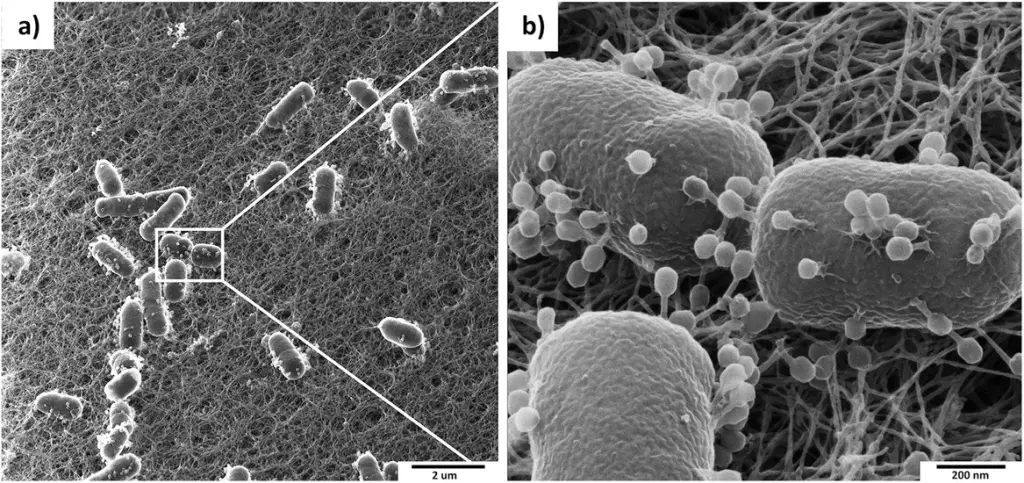Transmission electron microscopy history
 |
| Transmission electron microscope |
Electron microscopy has always had problems with imaging and interpretation, but the rise of digital electron microscopy and CCD cameras in the 1990s created a novel situation. In a general way, it appears that the quality of phage electron microscopy (read more about phages here) has slipped and that many present-day phage electron micrographs are far inferior in quality to the first images of negatively stained phages taken in the late 1950s (Brenner et al., 1959). A peak in phage electron microscopy was reached in the 1970s (see Dalton and Haguenau, 1973), but this seems to be forgotten. For example, in a confidential survey of about 130 phage papers since 2006, which described novel phages by mostly digital TEM, 70 featured low-contrast, unsharp, astigmatic, poor to inferior pictures. Some ‘‘phage descriptions’’ reported neither phage dimensions nor stains and did not specify the electron microscopes used. Only some 20 papers showed good-quality figures. The decline of phage electron microscopy may be linked to personal factors, namely the loss of great electron microscopists such as Eduard Kellenberger or Tom Anderson, their replacement by inexperienced investigators, and perceived leniency even of reputed journals to accept substandard micrographs. Indeed, poor micrographs can be associated with an inadequate technique, whether in specimen processing or imaging, regardless of the electron microscope used. Digital TEMs and CCD cameras are here to stay. CCD cameras have largely obviated darkroom photography and are wildly popular with inexperienced microscopists who fear working in the darkroom.
- Compared to conventional TEMs, digital electron microscopes appear to be more expensive, cannot be maintained typically by users, and need costly service contracts.
- Their life span remains to be seen, and they are more challenging to control than ‘‘manual’’ TEMs concerning contrast and magnification. However, conventional photographic chemicals and papers may be challenging to find because the market has shrunk. Bacteriophage Electron Microscopy 23
- The relative quality of the various digital TEMs and CCD cameras is challenging to evaluate in the absence of comparative studies. It seems that present top-grade TEMs, whether produced by FEI, JEOL, or Hitachi and concomitant CCD cameras, are roughly equivalent concerning resolution. The instruments are improved continuously. For example, TEMs manufactured by the FEI Company (Hillsboro, OR), which acquired the Philips Electron Optics Division, produce micrographs of exceptional quality.
- With ‘‘manual’’ TEMs, contrast is controlled in the darkroom through graded filters and papers. In the case of digital TEMs, one can obtain high-resolution and high-contrast pictures by adjusting pixel intensities with CCD camera software (Tiekotter and Ackermann, 2009). Unfortunately, the manufacturers of electron microscopes have seemingly neglected to issue guidelines for contrast enhancement, leaving users to fend for themselves.
- With both ‘‘manual’’ and digital TEMs, magnification is controlled utilizing test specimens, for example, catalase crystals (Luftig, 1967) or T4 phage tails. Latex spheres or diffraction grating replicas are suitable for low magnification only (10–30,000x). With ‘‘manual’’ microscopes, magnification can be corrected in the darkroom within minutes. The elaboration of digital electron microscopes usually is set by the installer and cannot, or only with great difficulty, be adjusted by the user. The user must photograph test specimens and define correction factors by calculation to control magnification.
- TEM manufacturers publish instructions for contrast enhancement.
- All specimens are purified before the examination (read about purification here). Crude lysates are to be banished. Purification is achieved most easily by differential centrifugation and washing in the buffer.
- Improve contrast of digital microscopes via Photoshop technology.
- Control magnification regularly using test specimens.
In a general way, it appears that the quality of phage electron microscopy has slipped. Many present-day phage electron micrographs are far inferior in quality to the first images of negatively stained phages taken in the late 1950s (Brenner et al., 1959). Credit to Ackerman et al


